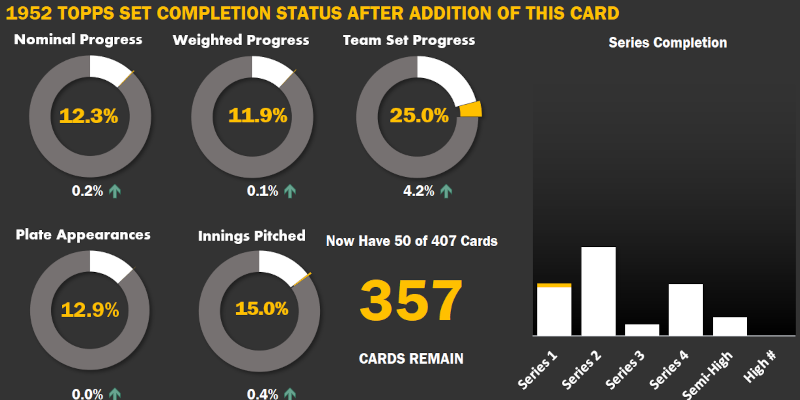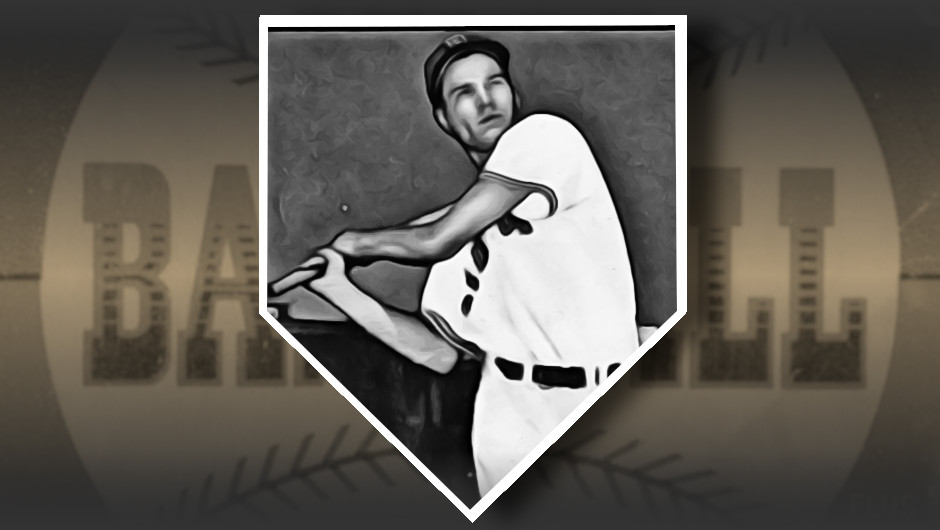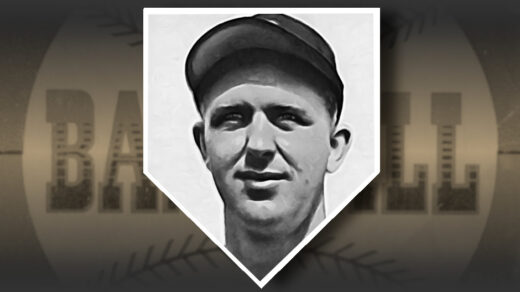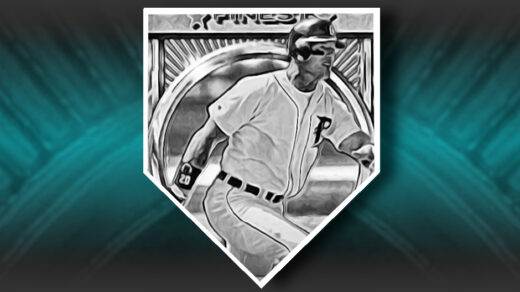When asked for investing advice, a long-lived answer has been to “buy low, sell high.” Some have found success with a modified version, buying high and selling higher. In this variation an investor buys something already recognized as performing well and waits for additional enthusiasm and momentum to drive the price higher.
Cliff “Lefty” Chambers had an eye for financial affairs and likely would have taken an interest in this practice. He broke into the majors with the Chicago Cubs but was reportedly excited to be traded to the Pittsburgh Pirates due to the latter’s front office and business acumen. He nearly doubled his salary in 1950 as Pittsburgh paid up. Chambers rewarded the light-hitting team by spinning a no-hitter early in 1951. Showing the business savvy that had attracted Chambers to the team, Pittsburgh promptly sold higher by trading their southpaw pitcher to the St. Louis Cardinals.
1952 Topps #68 Cliff Chambers
I’ve got to be honest, the photo on this card is one of the worst in the set. The coloring applied to the original black and white image isn’t the best. I haven’t found a copy of the original to confirm, but it appears his Cardinals uniform may have been painted over one from Chicago or Pittsburgh. Chambers’ expression looks tired, unlike in seemingly any of the other images available at the time.

Chambers’ 1951 Bowman card presents a much better photo. It has everything, including inexplicable pitching in the outfield, evergreen plantlife, electrical infrastructure, and wooden fencing. The Pirates uniform and the backdrop fence indicate the action is taking place at the Pirates’ Perris Hill Spring Training facility in California. Other cards usually show the wall with red paint, but in this version Huck Finn has apparently persuaded passersby to apply some whitewash.

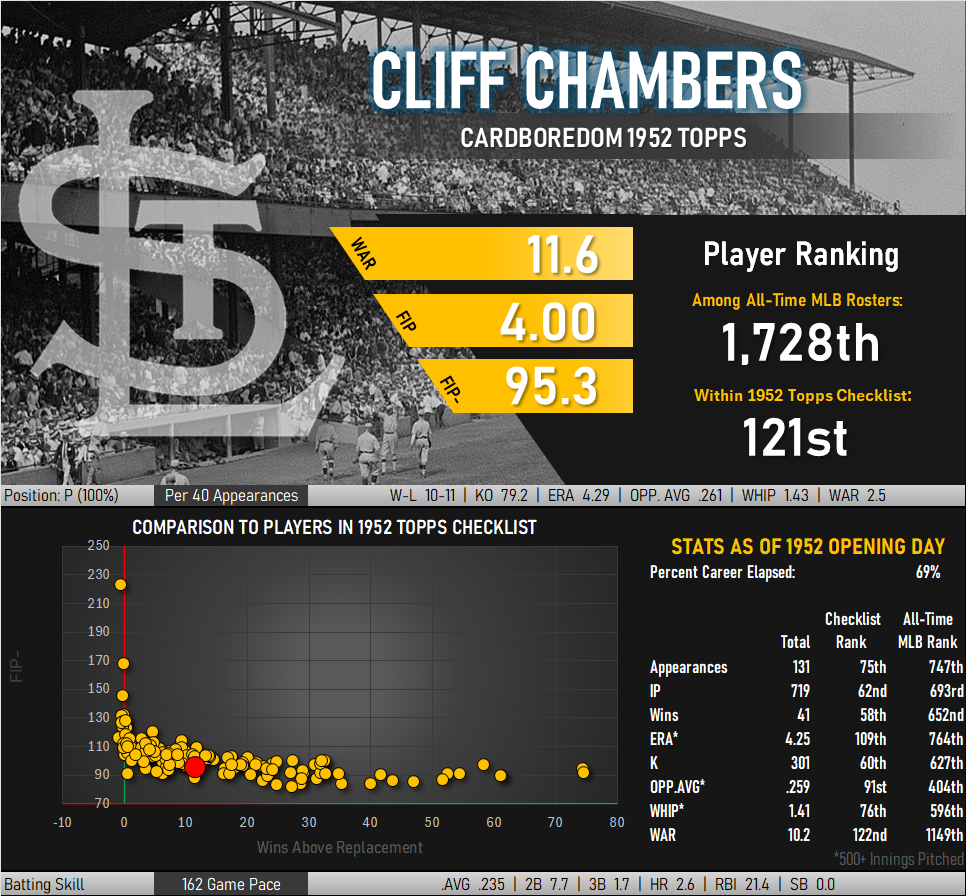
Interesting Stat: Chambers batted .235 over the course of his career, giving the pitcher a higher batting average than 28 of the 247 position players appearing in the 1952 Topps set.
